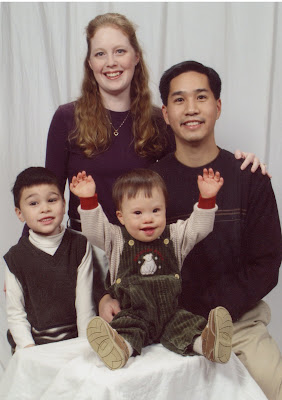I joined Facebook last week, after receiving an invitation from
DJ Chuang. I'm still figuring things out, and I'm not sure how much I will use it, but it's been interesting thus far and has already burned up a lot of my time. I've "friended" a number of my IVP authors and various InterVarsity staff, as well as folks from college and work. Fascinating to find out who knows who.
Andy Crouch, who also joined recently, gave me a helpful guideline - he said that he is only officially being friends with people he has actually met in person. That makes a lot of sense to me. But then I was conflicted over whether to befriend some of my authors whom I have never physically met. I've interacted with some mostly via e-mail and snail mail and have never even talked on the phone with some! And yet I feel like I know them, despite the lack of an embodied relationship.
All this makes me wonder how Facebook, MySpace, the blogosphere and online technology in general is changing the nature of friendship. Besides the grammatical devolution that "friend' has now become a verb, it does seem that social networking sites can both enhance as well as detract from human relationality. Just as every communication medium has its own pros and cons, Facebook is very useful in connecting and updating people's status. Great for checking in with old friends and finding lost classmates. And it's helpful to see what groups and networks my friends are in, because many of them are interested in the same issues and concerns that I gravitate toward. But generally, these sites don't seem to be a good forum for in-depth heart-to-heart talks or extended discussion or discourse.
The question of intimacy and distance is interesting, too. I can see people's photo albums of family members, weddings, vacations, etc., but this feels odd if I've never been over to their house and they've not shown me a physical photo album. Without the embodied relationship to mediate and guide me through the pictures ("this is my mom, this is my cousin," etc.), it almost feels voyeuristic and intrusive to look at people's photos.
I also think the quantification of friendship is disconcerting. Before last week, I haven't really wondered, "Hmmm, how many friends do I have?" If I sat down and wrote out lists, I could quantify my high school friends, college friends, grad school friends, work friends, church friends, etc. And I have a general sense each Christmas of how many cards and letters need to be mailed. But now Facebook tells me I have a specific number of "friends." And I am tempted to estimate my worth in terms of how many friends I have. I want to collect as many as possible. Like Pokemon - gotta catch 'em all. Does this commodify the human relationship?
And at what point does collecting friends become unwieldy and unmanagable? I've seen profiles of folks with 700+ friends. It takes a long time to scroll through even a few of the pages. Even the greatest extrovert in the world (or "connector," to use Malcolm Gladwell's word) can't really maintain meaningful relationships with that many people, can they? Maybe, maybe not. When I see lists of hundreds of names, whether friends or blog links, my eyes glaze over. I lose a sense of perspective and the discernment to say which of these folks I need to be connecting with.
We are tribal people, and while the blogosphere and social networking sites help us keep in touch with our tribes, there's a danger of dispersing ourselves amongst too many contacts. Extroverts are often described as having broad but shallow contacts, while introverts tend to have few but deep relationships. Facebook seems to be making virtual extroverts of us all (even as we hide behind our screens!). In some ways, collecting hundreds of friends dilutes the very concept of friendship. If I'm friends with everybody, am I really friends with anybody?
The reality, of course, is that all of us have degrees of friendship: many acquaintances, some buddies, and a precious few real friends. And Facebook doesn't have a way of weighting these differences - it's not like it would say, "You have 189 casual friends that you could talk to at a party, 45 friends you would hang out with on Friday nights, 12 good friends that you can cry with at two in the morning and 2 best friends that know all your deepest, darkest secrets and love you anyway."
I don't doubt that Facebook could have technology to rank friends based on our traffic and how many interactions, messages or wall posts we have, just like Google ranks search results to find the most helpful links. But that would be scary, to have a page that ranks your friends from best to worst.
This also makes me wonder how much the numbers-counting of "I have 93 friends" ties into the evangelical tendency to want to quantify our church numbers, attendance, visitors, growth, etc. It's a similar reductionistic bean-counting impulse to measure by quantity rather than by quality or depth of commitment.
Anyway, there's much more that could be said (and indeed, there are a slew of new parenting and youth ministry books this year about the possibilities and pitfalls of MySpace and the like). These are just my first impressions as a Facebook newbie. While Facebook may be an helpful resource to some degree, I should be cautious about letting it suck up gobs of time. Ultimately, I need to remember that it's not just the number and quantity of friends that are important; it's the overall nature and quality of all the relationships in my life.

